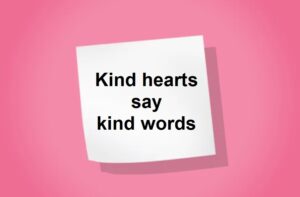
Rav Henoch Leibowitz zatzal on the Parsha – The Pursuit of Excess Gashmius
by Rabbi Yair Hoffman “In the choice of the land we shall bury your dead” [Bereishisis 23:6] The Midrashic Teaching The Midrash Tanchuma [Behar 1] writes: “Be not alarmed by a man of evil eye” [Mishlei 28:22] – this refers to Ephron the Hittite. When Sarah died, Abraham went to Ephron to purchase the cave from him. Ephron said to him, “Give me its value,” and he said to him “The land is worth four hundred shekels of silver between me and you, what is it?” Abraham began to weigh out the silver to Ephron, as it is said “And Abraham listened to Ephron, and Abraham weighed out [the silver] to Ephron.” Ben Maara said, although Rabbi Chanina said that all shekels mentioned in the Torah are sela’im (regular shekels), except for these which are kentorin (centenaria, a larger measure), Abraham passed four hundred kentorin before Ephron. When Ephron saw the silver, he became alarmed and flustered, and said ‘In the choice the land we will bury your dead.’ The Holy One Blessed be He said, “You were alarmed about money? By your life, you wull have a deficiency in the matter.” And what was his deficiency? Rabbi Yehuda HaLevi bar Shalom said: Every [mention of] ‘Ephron’ written here, until he took the silver from Abraham, is written full (with the letter vav), but this one is deficient, ‘And Abraham weighed out to Ephrn’ is written without the vav.” The Sequence of Events It is clear from this Midrash that the chain of events progressed as follows: A) Abraham requested from Ephron to sell him the Cave of Machpelah. B) Ephron agreed to sell the Cave of Machpelah for four hundred shekels of silver. C) Abraham paid Ephron the full price, with larger shekels that contained more shekels. D) Ephron became over-enthralled by the abundance of silver, and therefore suggested to Abraham that he could choose the “choice burial place.” E) And since Ephron became over-enthralled by the abundance of money, therefore Ephron was punished and his name was written in the Torah deficiently, without a vav. The Fundamental Question The Midrash requires explanation: Why, in fact, was Ephron punished? After all, Ephron did not commit any transgression! On the contrary, he offered Abraham the choice burial place! Rav Leibowitz’s Explanation Rav Henoch Leibowitz zt”l explains that it is clear from this Midrash that the very fact that Ephron was over-enthralled by the abundance of money was in and of itself a transgression, even if the alarm did not lead to any transgression. For the Holy One, Blessed be He, wants our mind to be clear upon us – that we should not confuse our mind without any proper reason. We are here for a reason – all of us, and we cannot become side-tracked from our purpose or mission in life by the pursuit of the false illusive attraction of materialistic consumption. Here there was no proper reason to confuse Ephron’s mind. Ephron’s role in the world was to perfect himself spiritually, and not to become wealthy materially. Therefore, the very fact that his mind became alarmed, that he had allowed himself to react in a materialistic manner – was a diversion from the true direction of where we should be and is considered a transgression. Modern Application and

























